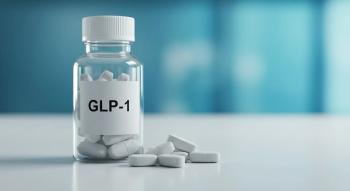
Study Shows Mail-Order Prescriptions May Be Often Exposed to Unsafe Temperatures
According to investigators, most medications should be stored at room temperature, between 68 and 77 degrees Fahrenheit.
An assessment of nonrefrigerated shipping methods used by mail-order pharmacies has shown that prescriptions shipped in standard bubble-padded envelopes during winter and summer months are likely to spend a substantial portion of time outside the recommended safe temperature range for most medications. Results of this research were presented virtually on Thursday during the 2020 American Society for Health-System Pharmacists (ASHP) Midyear Clinical Meeting and Exhibition.1,2
Most medications should be stored at room temperature, between 68 and 77 degrees Fahrenheit. When exposed to temperatures outside this range they can be chemically or physically altered and lose effectiveness. According to researcher Karlee Paloukos, a pharmacy student at University of Utah in Salt Lake City, medications altered by improper storing methods pose a safety risk to patients.1,2
“Patients should be warned of these risks and have the option to fill their prescriptions at a local pharmacy, where temperature storage logs are meticulously tracked to ensure the integrity of the dispensed medications, at the exact same cost,” said Paloukos in a prepared statement. “Increased regulation of mail-order pharmacies to ensure appropriate storage conditions are maintained throughout transit is paramount.”1
To test whether mailed prescriptions fall outside recommended ranges in transit, 48 nonrefrigerated packages containing a temperature data logger were shipped to 6 locations through the US Postal Service. These deliveries were made in Baltimore, Maryland; Chicago, Illinois; Tucson, Arizona; Palo Alto, California; Largo, Florida; and Katy, Texas.1
Packages were shipped 4 times to each location in winter, between December 2019 and February 2020, and 4 more times to each location in summer, between June 2020 and August 2020. Seven of 8 shipments were included in the analysis; data from 1 summer mailing was excluded because it was lost due to delays related to the coronavirus disease 2019 (COVID-19) pandemic.1,2
Every shipment was exposed to temperatures outside the recommended range at some point during transit, with the percentage of time spent out of those temperatures ranging from 68% to 87% in the winter, and 27% to 54% in summer.1,2 There was no link found between the time spent on delivery nor the distance the packages traveled, and the percentage of time they were exposed to inappropriate temperatures.2
According to Mary Ann Kliethermes, PharmD, ASHP director of medication safety and quality, who was not involved in the study, the analysis highlights the importance of considering temperature fluctuations for the evolving market of mail-order prescriptions.1
“We must ensure appropriate storage and transit conditions are maintained, especially for medications that are most impacted by temperature changes. The round of lost packages raises another concern about mail-order drugs, as medications should make their way to patients who need them,” said Kliethermes, in a prepared statement.1
Investigators also concluded that future studies are needed to assess potentially unsafe shipping methods and to further examine temperatures and lengths of exposure that may be associated with decreases in medication efficacy.2
Michelle Speckman, RPh also contributed to this study.2
REFERENCES
- Mail-order Medications Often Exposed to Unsafe Temperatures, Study Shows [news release]. Bethesda, MD; December 10, 2020: ASHP. Accessed December 10, 2020. https://www.ashp.org/news/2020/12/09/mail-order-medications-often-exposed-to-unsafe-temperatures-study-shows?loginreturnUrl=SSOCheckOnly
- Paloukos K. Speckman M. Assessment of Unrefrigerated Shipping Methods Used by Mail-Order Pharmacies and Exposure of Medications to Unsafe Temperatures. Presented at: 2020 ASHP Midyear Clinical Meeting and Exhibition; virtual: December 10, 2020.
Newsletter
Stay informed on drug updates, treatment guidelines, and pharmacy practice trends—subscribe to Pharmacy Times for weekly clinical insights.






































































































































































































